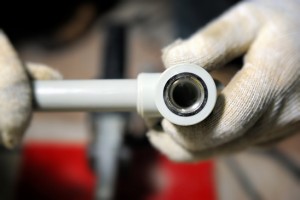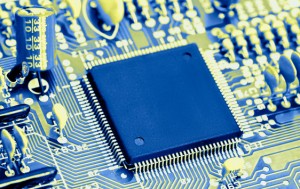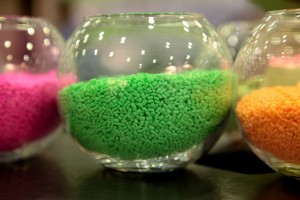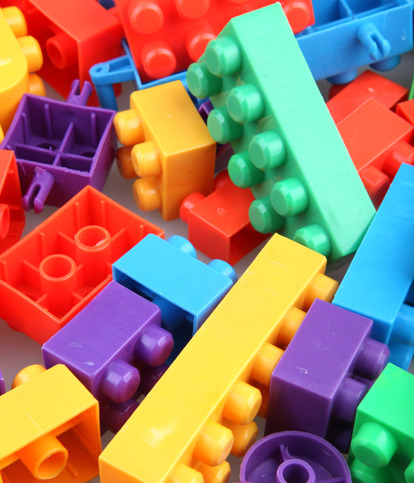 Since the advent of flight more than a century ago, aircraft production for airplanes and helicopters has evolved from its most primitive form to the current production, where roughly half the final product is created with plastics.
Since the advent of flight more than a century ago, aircraft production for airplanes and helicopters has evolved from its most primitive form to the current production, where roughly half the final product is created with plastics.
The injection molding equipment at Superior Plastics has the ability to produce the necessary items that go into the production of these forms of aircraft.
(more…)
 When it comes to the world of injection molding, plastics are integral to the overall process. Through advanced technology, thermoplastics has made great strides in different aspects of industry, a strong indication that it’s here to stay. (more…)
When it comes to the world of injection molding, plastics are integral to the overall process. Through advanced technology, thermoplastics has made great strides in different aspects of industry, a strong indication that it’s here to stay. (more…)
When it comes to plastic injection molding, the creation process begins by creating the necessary plastic mold that will be used. That part is easy for Superior Plastics due to the availability of state-of-the-art machinery that is specifically designed to handle such jobs. (more…)
 Plastic injection molding machines first came about in the 1930’s to meet the needs of an industry that required a manufacturing process which could produce complex and custom plastic components. The injection molding process soon evolved into a successful method of mass production which introduced products cheaply and within exacting tolerances. Due to the precision of injecting plastic into a mold instead of stamping or cutting it out, the process has lessened waste and allowed lower quality plastics to be introduced. The injection molding process has revolutionized the manufacturing process for components and items that we every day, like plastic forks, toothbrushes and sunglasses. (more…)
Plastic injection molding machines first came about in the 1930’s to meet the needs of an industry that required a manufacturing process which could produce complex and custom plastic components. The injection molding process soon evolved into a successful method of mass production which introduced products cheaply and within exacting tolerances. Due to the precision of injecting plastic into a mold instead of stamping or cutting it out, the process has lessened waste and allowed lower quality plastics to be introduced. The injection molding process has revolutionized the manufacturing process for components and items that we every day, like plastic forks, toothbrushes and sunglasses. (more…)
 Your company has a great idea for a product. You have the patents squared away. You have explored your markets thoroughly. It’s time to figure out the best manufacturing option. A good manufacturing process should be versatile, simple and affordable. It should yield dependable results on a consistent basis. Innovators the world over are discovering the world of possibilities offered with plastic injection molding. So what makes injection molding so great? (more…)
Your company has a great idea for a product. You have the patents squared away. You have explored your markets thoroughly. It’s time to figure out the best manufacturing option. A good manufacturing process should be versatile, simple and affordable. It should yield dependable results on a consistent basis. Innovators the world over are discovering the world of possibilities offered with plastic injection molding. So what makes injection molding so great? (more…)
 In the 1800s, the advent of plastics and polymers spawned the concept of injection molding. The basic definition of injection molding is easy to understand. In the case of plastic injection molding, plastic resins, sometimes referred to as “plasticizers,” are passed through a heated plastic injection mold to create specific product forms. Under heated temperatures, these resins become pliable and elastic enough to be transferred to molds. One example of injection molding is the method by which window lineals are produced. In this example, polymerized plasticizer resins are entered into a heated industrial hopper and transferred through a screw or clamp type output to a plastic injection molding machine with sprue and ejector controls. The heated elasticized material is shaped into long rods by the injection mold process. The injection mold may be designed with decorative curves and angles, or the injection mold may include small markings. These markings indicate where the rods will be joined so fabricators can attach these to window glass to create window frames. Some injection molding machines also have cooling chambers where high heat temperatures are required to create the final product. (more…)
In the 1800s, the advent of plastics and polymers spawned the concept of injection molding. The basic definition of injection molding is easy to understand. In the case of plastic injection molding, plastic resins, sometimes referred to as “plasticizers,” are passed through a heated plastic injection mold to create specific product forms. Under heated temperatures, these resins become pliable and elastic enough to be transferred to molds. One example of injection molding is the method by which window lineals are produced. In this example, polymerized plasticizer resins are entered into a heated industrial hopper and transferred through a screw or clamp type output to a plastic injection molding machine with sprue and ejector controls. The heated elasticized material is shaped into long rods by the injection mold process. The injection mold may be designed with decorative curves and angles, or the injection mold may include small markings. These markings indicate where the rods will be joined so fabricators can attach these to window glass to create window frames. Some injection molding machines also have cooling chambers where high heat temperatures are required to create the final product. (more…)
 Plastic needs to be fabricated such that it can be used for various purposes such as wires, furniture parts, bottle caps, and many other commonly found plastic products around us. A manufacturing process that involves plastic molding for this purpose can be referred to as injection molding, a procedure that Superior Plastics knows all about!
Plastic needs to be fabricated such that it can be used for various purposes such as wires, furniture parts, bottle caps, and many other commonly found plastic products around us. A manufacturing process that involves plastic molding for this purpose can be referred to as injection molding, a procedure that Superior Plastics knows all about!
The Injection Molding Process
The entire process of molding takes about 2 minutes and comprises of four different stages namely clamping, injecting, cooling, and ejecting. The machine used is called the plastic injection molding machine. Raw plastic is usually fed in to the machine where it is melted under high pressure and temperature. The injection machine then injects the melted plastic into the mold where it is made to cool and further solidify into the desired shape. Plastic is highly versatile and can be easily molded or recycled. This makes it capable of being used in a wide range of applications. After the completion of each cycle, a small portion of post-processing would be required. This mostly involves lending a fine finish to the cooled part by trimming or scrapping the additional solidified plastic molding parts. (more…)
 Since the advent of flight more than a century ago, aircraft production for airplanes and helicopters has evolved from its most primitive form to the current production, where roughly half the final product is created with plastics.
Since the advent of flight more than a century ago, aircraft production for airplanes and helicopters has evolved from its most primitive form to the current production, where roughly half the final product is created with plastics. 
 When it comes to the world of
When it comes to the world of 
 Your company has a great idea for a product. You have the patents squared away. You have explored your markets thoroughly. It’s time to figure out the best manufacturing option. A good manufacturing process should be versatile, simple and affordable. It should yield dependable results on a consistent basis. Innovators the world over are discovering the world of possibilities offered with
Your company has a great idea for a product. You have the patents squared away. You have explored your markets thoroughly. It’s time to figure out the best manufacturing option. A good manufacturing process should be versatile, simple and affordable. It should yield dependable results on a consistent basis. Innovators the world over are discovering the world of possibilities offered with  In the 1800s, the advent of plastics and polymers spawned the concept of
In the 1800s, the advent of plastics and polymers spawned the concept of  Plastic needs to be fabricated such that it can be used for various purposes such as wires, furniture parts, bottle caps, and many other commonly found
Plastic needs to be fabricated such that it can be used for various purposes such as wires, furniture parts, bottle caps, and many other commonly found